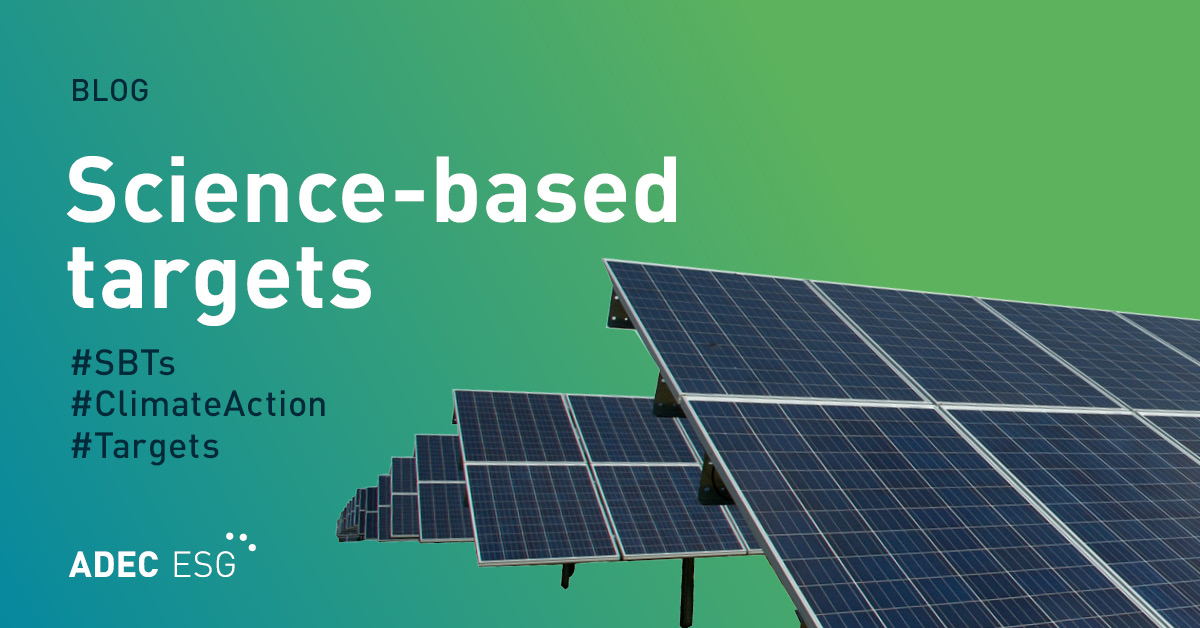Why verification?
At its highest level, the verification of environmental data is the process of having an independent third-party confirm the accuracy and authenticity of information provided. Verification is considered best practice in all environmental reporting to ensure data is accurate, which allows for more efficient goal setting and targeted approaches to reduce GHG emissions (or improve sustainability in other areas), as well as transparency and reliability in reported metrics.
Today, the verification of greenhouse gas (GHG) emissions specifically is quickly becoming essential for companies and governments around the world as requirements to report emissions increase. In late 2023, the U.S. Security and Exchange Commission (SEC) is expected to release a new requirement for companies to disclose their scope 1 and 2 emissions, a requirement already rolled out by the EU in 2021. States like California, Oregon and Washington also already have a disclosure mandate and require that organizations verify their inventory if they emit over 25,000 MT CO2e annually.
Additionally, investors are increasingly asking for companies to report on a variety of climate-related factors, from risk management to emission reduction strategies. As organizations are required to report more data, verification becomes more significant than ever to ensure the quality of data and processes disclosed and to give data users confidence that the data is accurate.
What is verification?
To verify GHG emission data, verifiers will typically request invoices with raw data, calculations sheets, methodology documentation (such as an Inventory Management Plan) and any other resources that were used to compile data.
Verifiers will conduct risk-based sampling, in which they re-calculate the largest emission sources in the inventory, data that looks likely to have errors (for example, if certain data was entered manually), and sources that are easily miscalculated (like refrigerants with a high Global Warming Potential).
They also check the overall methodology used, confirm that the correct emissions factors were applied and broadly ensure all assumptions and conclusions are reasonable.
The GHG Emission Data Verification Process
Kick-Off Meeting
- Outline the verification scope, objectives, and criteria
- Define the operational boundaries
- Align on the timeline and process
Planning of Verification
- Review the GHG inventory and assertion
- Development of evidence-gathering plan
- Development of Verification Plan and audit schedule
Audit
- Deliver Verification Plan and request data from client
- Review sample sources of the GHG inventory for abnormalities
- Complete a site visit(s) (if required per verification criteria)
- Confirm conformance with the GHG Protocol and any other relevant standards
- Confirm emission factors applied appropriately
- Confirm calculations were performed correctly
- Re-calculate the GHG inventory for selected sources for final assurance there are no errors or misstatements
Post-Audit Work
- Client addresses any material findings and gathers any missing evidence
- Draft verification report and opinion
- Internal peer review of the verification report and opinion of the validity of the GHG assertion
Final Deliverable
- Issue a verification opinion statement and detailed verification report
Closeout Call
- Review of verification activities
- Discuss opportunities for improvement

Environmental verification standards
Data is verified against standards, which are sets of principles used by a verifier that outline the process through which the data should be assessed. Different sets of standards allow for various levels of assurance, which are used to determine the depth of detail that a verifier designs into the Verification Plan to determine if there are material omissions, errors, or misstatements.
Two levels of assurance are generally recognized – reasonable and limited. Reasonable assurance statements generate the highest level of confidence that an emissions report is materially correct. Limited assurance statements provide less confidence and involve less detailed examination of GHG data and supporting documentation. Limited assurance statements assert that there is no evidence indicating an emissions report contains material misstatements.
The main verification standard used by our verifiers is ISO140064-3. This standard from the Internal Standards Organization (ISO) was specifically created for GHG inventories and provides reasonable assurance. Some examples of other common types of standards include standards from the GHG Protocol, the Climate Registry, and the International Standards on Assurance Engagements (ISAE). With so many options to choose from, how do organizations decide which standard is right for them?

Choosing the right verification standard
In the rapid-evolving space of environmental reporting, it can be difficult to determine what level of assurance, and therefore verification standard, is right for your company. There are a few key factors to account for when making this decision:
- Governmental regulations: Different countries, states, and jurisdictions all have unique requirements for disclosure and verification. We recommend checking the requirements specific to your area of operation to ensure that they are being met.
- Available resources: Not all companies have infrastructure in place to provide the necessary level of information required by more stringent standards. Additionally, the higher level of assurance a standard provides, the larger the time commitment and cost. Determining what resources your company has available to dedicate towards GHG emissions verification is another important factor to keep in mind.
- Risk management: Using a standard with a higher level of assurance reduces the risk that data will be inaccurate. For companies that need more certainty that their data is accurate to mitigate the risk of a lawsuit or backlash, a more stringent standard may be required.

Due to the increasing effects of climate change, the reduction of GHG emissions is arguably the most important ESG initiative of today. Governments, consumers, and investors are increasingly demanding that organizations reduce their emissions, and the first step in doing so is obtaining accurate data on emission sources and types. Verification ensures that this data is accurate and helps companies effectively and efficiently reduce their emissions.
ADEC ESG Solutions helps you put your sustainability data to work. Our world-class team of technical experts assist companies in every industry with ESG data verification, GHG data management and calculations, data monitoring and evaluation, and more. Talk to us today to learn more about how we can support your sustainability goals.




